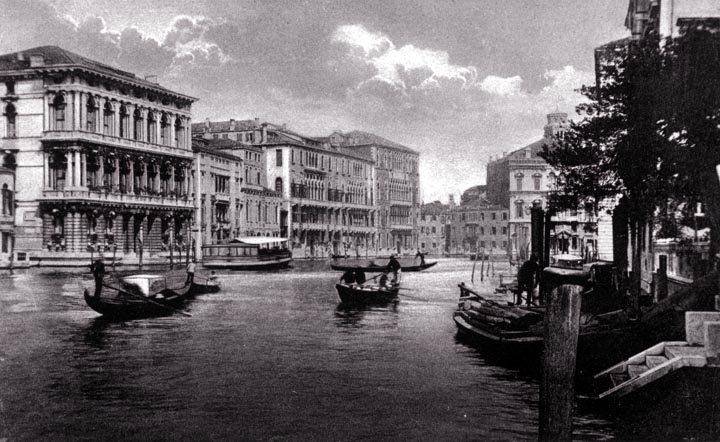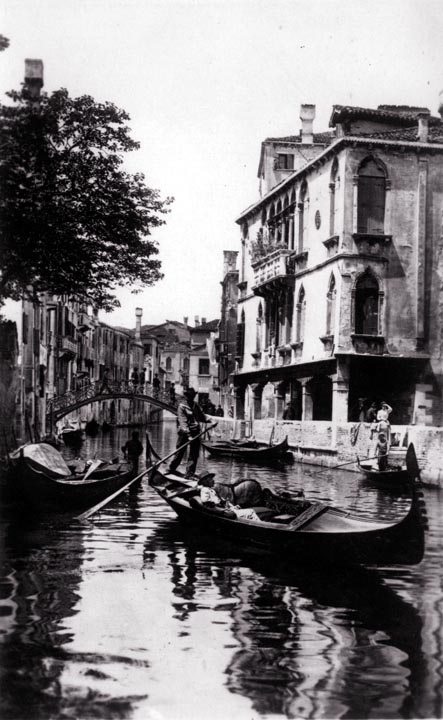
The first four illustrations are from Venice, which has so much to tell us about canals. We begin here with the Grand Canal, the central artery of Venice, which divides the main body of the city into two roughly equal parts. The canal wends its way in a great S-curve through the heart of the city. This is the best address in Venice - most of the major palaces front on the Canal Grande, which is much wider than any of the others and up to the task of carrying the comparatively heavy traffic. (Standing on the Rialto Bridge and watching the traffic is a pleasant way to pass some time. The boat traffic is mostly reasonably quiet and usually not to stinky.) When this photograph was taken, most of the traffic on the canal was still powered by oars, although there would have been some steam-powered ferries by this time. Today, the only serious use of rowed vessels is the traghetto service that crosses the Grand Canal at several points. These larger gondolas, with two oarsmen, still carry quite a lot of traffic across the canal, which is crossed by only three bridges, rather far apart. The smaller, single-oarsman gondolas are today used almost entirely by tourists. The obnoxious water taxis have taken their place for serious transport, and this is a very unfortunate change - the water taxis are noisy, stinky, and, by virtue of their high speed, cause heavy wakes that are undermining buildings that front on the canals. In their own way, they are worse than cars, but there are, fortunately, not many of them.
|
 Next City Design Home
E-mail |